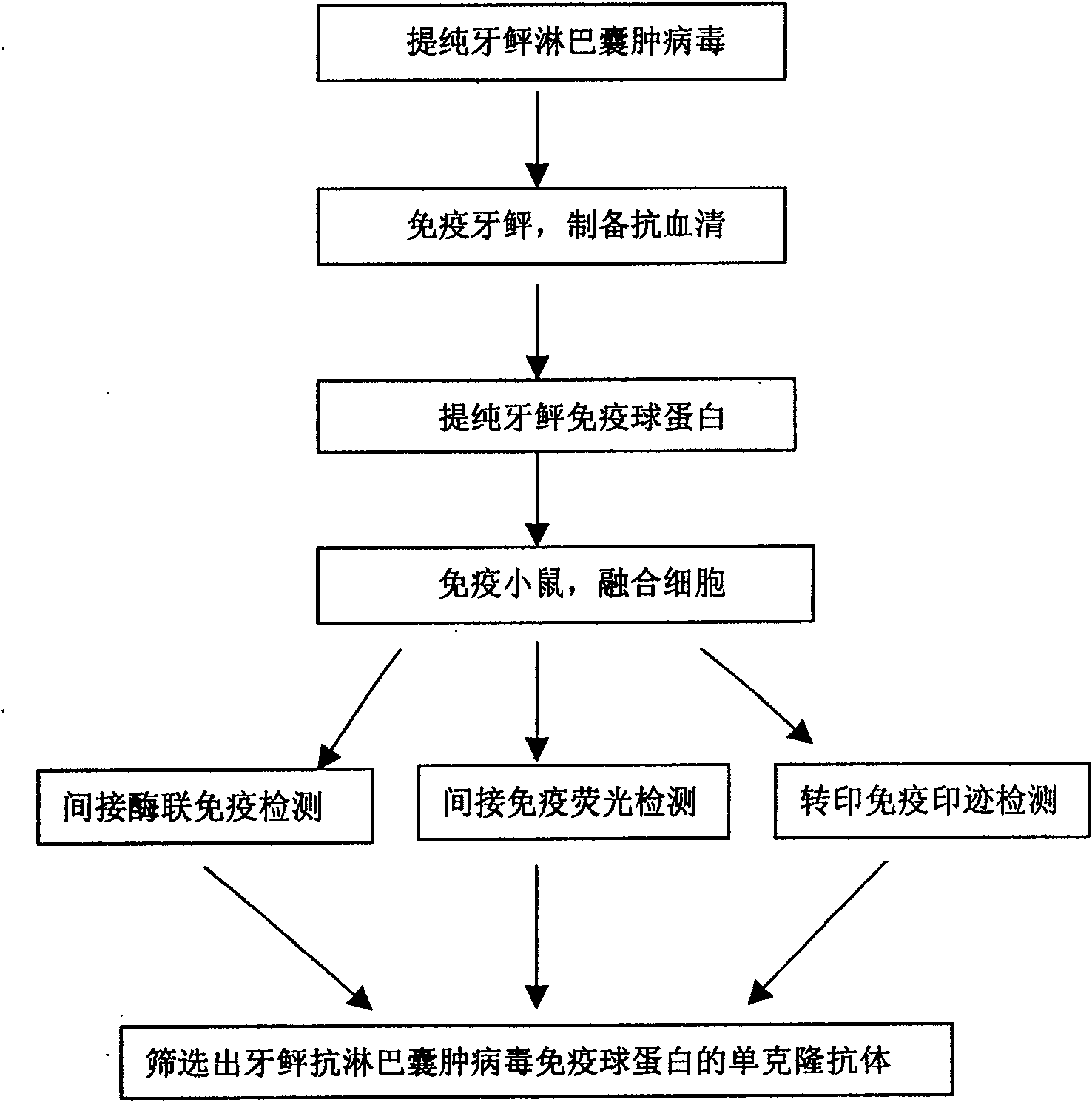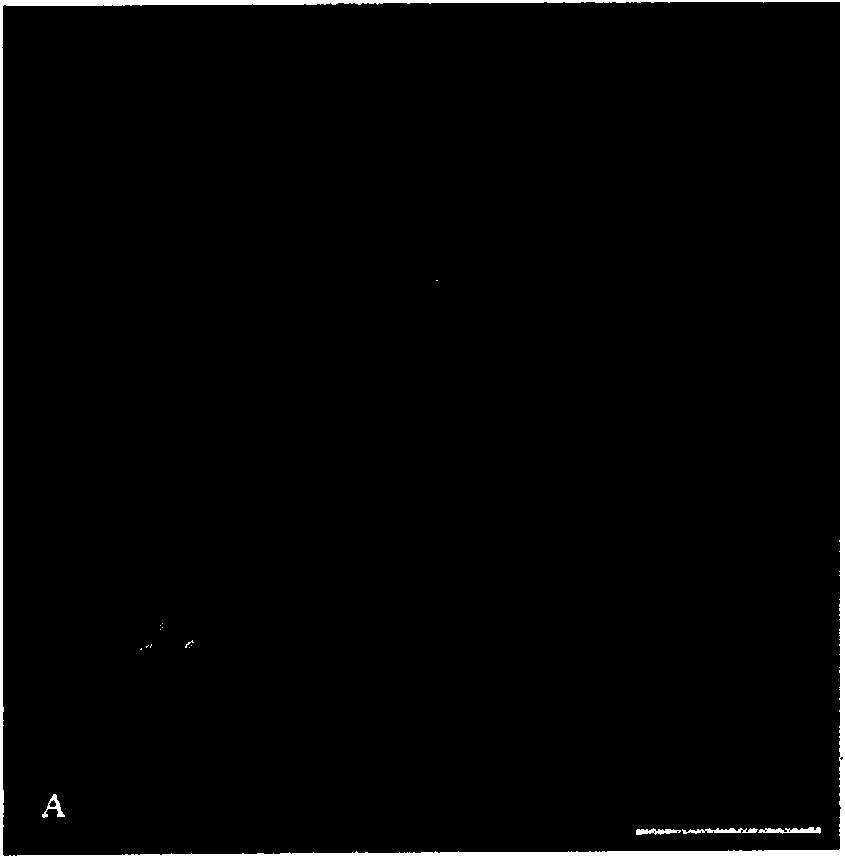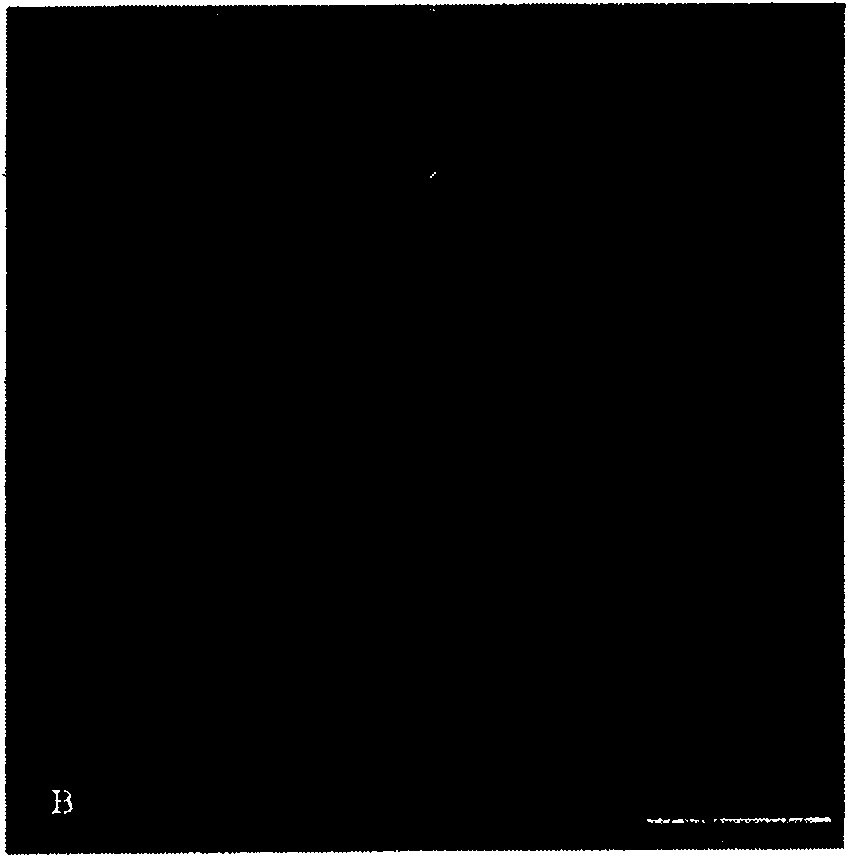Monoclonal antibody of immunoglobulin of anti lymphocyst vitos of Pacific fluke, and preparation method
A technology of lymphocyst virus and monoclonal antibody, which is applied in the monoclonal antibody of flounder against lymphocyst virus immunoglobulin and its preparation, and the improvement of immunology application technology, which can solve the problem that virus infection is difficult to detect and the host has not been studied Issues such as effective drugs for cells to achieve novel effects of design
- Summary
- Abstract
- Description
- Claims
- Application Information
AI Technical Summary
Problems solved by technology
Method used
Image
Examples
Embodiment 1
[0027] Development of monoclonal antibody against lymphocyst virus immunoglobulin in flounder
[0028] 1. Antigen preparation
[0029] (1) Preparation of flounder lymphocyst virus
[0030] ①Take the diseased flounder, first use 70% alcohol cotton ball to disinfect the affected part, then cut off the cyst with a sterilized scalpel blade, add an appropriate amount of quartz sand and TNE (50mM Tris, 00mM NaCl, 1mM EDTA, pH 7.4) buffer, and mix well. pulp;
[0031] ② Centrifuge the homogenate (4°C, 500g, 20min), and take the supernatant;
[0032] ③ Centrifuge the supernatant (4°C, 1800g, 20min), and take the supernatant;
[0033] ④ Make 30% (W / W) sucrose solution from the supernatant and sucrose, centrifuge at 78500g for 120min at 4°C, discard the supernatant;
[0034] ⑤ Add TNE to the precipitate to 1ml, mix well, place gently on top of the sucrose gradient solution (37%, 40%, 47%, 52%, 57%, 62%), centrifuge at 78500g for 120min at 4°C;
[0035] ⑥ Aspirate the virus band in th...
Embodiment 2
[0085] The indirect ELISA identification of monoclonal antibody of the present invention:
[0086] (1) Coating antigen: Lymphocyst virus was diluted 1:10 with carbonate coating solution (pH 9.6), added to a 96-well microtiter plate (50 μl / well), and coated overnight at 4°C;
[0087] (2) Aspirate the coating solution, wash with PBST, each time for 5min, and wash three times;
[0088] (3) 200 μl of 3% bovine serum albumin (with PBS) was added to each well to block for 1 hour at 37°C;
[0089] (4) Wash three times with method ②;
[0090] (5) Add flounder antiserum (diluted 1:10) 50 μl to each well, and incubate at 37°C for 2 hours;
[0091] (6) Wash three times with method ②;
[0092] (7) Add the culture supernatant of the hybridoma cells screened and cloned above as the primary antibody to the microtiter plate at 50 μl per well, and incubate in a 37°C incubator for 1 hour;
[0093] (8) Wash three times with method ②;
[0094] (9) Alkaline phosphatase-labeled goat anti-mouse I...
Embodiment 3
[0099] Identification of the transfer immunoblotting method of the monoclonal antibody of the present invention:
[0100] (1) Sodium dodecyl sulfate-polyacrylamide gel electrophoresis:
[0101] ① Add the extracted flounder immunoglobulin to the sample buffer solution containing sodium dodecylsulfonate in equal proportions, and boil in boiling water for 3-5 minutes;
[0102] ②Put the sample treated in ① into the sample well, add 10 μl of sample into each well, under constant current condition, use low current (30-40mA) at the beginning, after the sample is concentrated into a line in the stacking gel, Increase the current (50-70mA), electrophoresis until the bromophenol blue indicator reaches the bottom edge, then stop the electrophoresis and take out the gel;
[0103] ③Cut a piece of nitrocellulose membrane (pore size 0.22 μm) with the same size as the electrophoresis gel to use the electrotransfer buffer (electrotransfer buffer: 25mmol / L Tris-Base, 192mmol / L glycine, 20% met...
PUM
| Property | Measurement | Unit |
|---|---|---|
| molecular weight | aaaaa | aaaaa |
Abstract
Description
Claims
Application Information
 Login to View More
Login to View More - R&D
- Intellectual Property
- Life Sciences
- Materials
- Tech Scout
- Unparalleled Data Quality
- Higher Quality Content
- 60% Fewer Hallucinations
Browse by: Latest US Patents, China's latest patents, Technical Efficacy Thesaurus, Application Domain, Technology Topic, Popular Technical Reports.
© 2025 PatSnap. All rights reserved.Legal|Privacy policy|Modern Slavery Act Transparency Statement|Sitemap|About US| Contact US: help@patsnap.com



